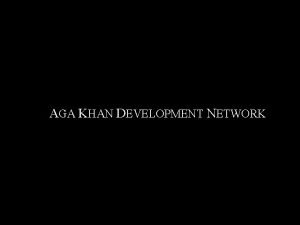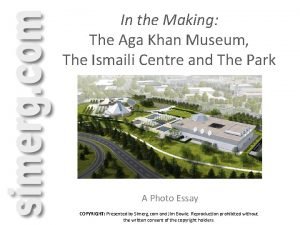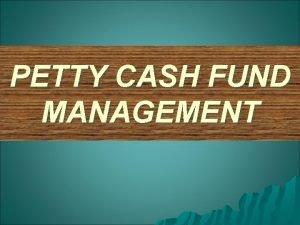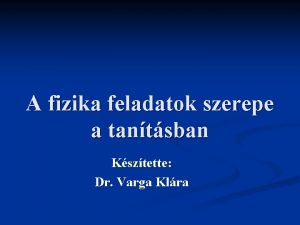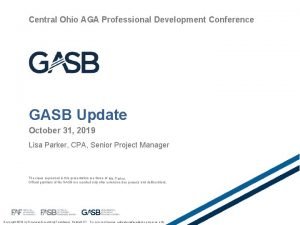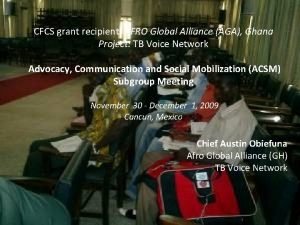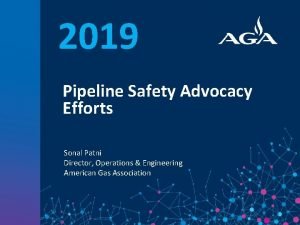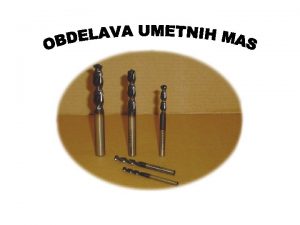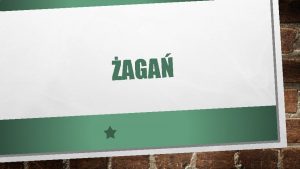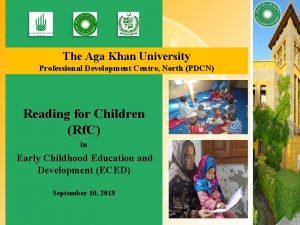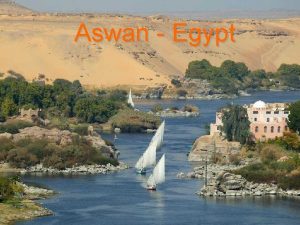Aga Khan Fund for Economic DevelopmentIndustrial Promotion Services













- Slides: 13

Aga Khan Fund for Economic Development/Industrial Promotion Services Norfund 20 -years Anniversary Conference 7 th September 2017

Snapshot of AKDN Global Impact: The Aga Khan Development Network (AKDN) Healthcare: Largest non profit private healthcare system in the world • • AKDN is a network of private, non -denominational development agencies which work primarily in the poorest parts of Asia and Africa AKDN (and all its agencies) work toward these core objectives: 1. Elimination of global poverty 2. Promotion and implementation of secular pluralism 3. The advancement of status of women 4. Honoring of Islamic art and architecture Education: 2 Million students benefit from AKDN programs annually Trust for Culture: Social and cultural revitalization. 43 million visitors to sites/parks Rural Development: 8 Million people access food security programs Economic Development: +100 Diverse companies in 15 countries; employs over 47, 000 people; generates US$4. 1 B revenue; profits reinvested and fills gaps – never bandwagon!

Aga Khan Fund for Economic Development (AKFED) invests in hydropower plants through IPS, its Infrastructure and industrial arm AKDN established several hundreds of years ago and 4 th Aga Khan celebrates special anniversary in 2017 3

Africa has a long way to go! • Huge power demand, yet public sector lacks sufficient resources! • Low per capita and electricity access – Among World’s lowest § 1 billion population, 48 countries but capacity < Spain § Kenya (50%); Uganda /Rwanda (20%); & Burundi (7%) § High demand/energy growth – 10% common, but slowing down. Caution on oversupply. • Situation of Grids § Load-shedding common due to capacity (MW) deficit and energy (MWh) constraints (Costs 2. 1% of GDP, industry incurs 6% turnover loss) § Emergency becoming long-term, e. g. Cote d’Ivoire! • Abundant Resources - Opportunties § Large hydro (Nile, Congo) and geotermal – base load § Pumped storage for peaking –[using solar] § Bottom of pyramid – isolated micro/mini grids 4

Ominous Challenges at start! • Governments lack of capacity. Poorly structured and slow development projects • Lack of creditworthy off-takers. High returns, short tenures and high tariffs • Lack of enabling legal/regulatory frameworks. Uncertain investment climates • Low investor appetite. Yet region needs massive investment and development • Developed world investors. Lack local knowldege and demand inordinate returns • Small economies, small projects. Lack of economies of scale results in high US$/MW • Emerging countries favoured. Poor countries crowded out by BRICs Bujagali - Artists Impression • Anti-hydro activists/lobby groups. Fierce Opposition to hydropower development 5

800 MW and > US$1. 7 b pioneering interventions by AKFED Achieved through commitment, innovation and partnerships Bujagali Energy Ltd. Azito Energy Ltd. Tsavo Power. • 250 MW HPP Uganda • 430 MW CCGT C d’ Ivoire • 75 MW HFO Kenya • Operational since 2012. • Operational since 2004. • Operational since 2002. • Largest PPP in East Africa • Largest IPP in West Africa • First project finance in East Africa West Nile (Uganda) • 3. 5 MW HPP, T&D utility • 16, 000 customers • 1 st Private Mini Grid Africa Pamir Energy (Tajikistan) • 40 MW HPP, T&D Utility • 250, 000 customers. • 1 st Private Grid in C. Asia

250 MW Bujagali Hydro Project, Uganda (US$902 m) Project Brief • Largest privately financed hydropower project in Africa • Competitively acquired by IPS, Sithe co-developed project with IPS in lead • Reached COD 1. 8. 2012, on budget and on time • Exceeds contracted performance - availability >99% Exceeds Targets– despite media narrative! • Supplies upto 50% of Uganda’s energy • Eliminated load-shedding and over US 9. 5 m in subsidies p. m. • Attributed to 2. 6% increase in GDP and creating over 250, 000 jobs (40% of which women) • Replaced US¢ 35 /k. Wh thermal generation • Generates 900, 000 CERs p. a. – largest in LDCs 7

Emerging Challenges • Payment risk due to oversupply e. g. publicly funded projects – Uganda and Kenya • Long lead times. 3 -6 yr development and approx. 5 yr construction • High tariffs from traditional project financing –blended & longer tenure financing needed • Obsolescence bargaining - Tariff renegotiation post-commissioning and refinance efforts • Payment default by off-takers – e. g. Tanzania and Cote d’Ivoire • Few contractors for medium sized hydropower plants, e. g. ~50 MW (high tariffs) • Chinese funded Projects. Crowding out IPPs 8

Partnering with SN Power/Norfund, CDC & PEs • Leverage on international standing, mob. more capital – impact more lives • Long-term investors with strong development and ethical focus • In case of Norfund, broaden Norwegian cooperation beyond education & health • Tap proven hydro expertise (traditional) & experience incl. In emerging countries, e. g. Zambia, Phillipines, etc. • 147 MW Ruzizi III and possibly 250 MW Bujagali to herald long/successful partnership • Large/mini/micro hydro opportunities – East/Central Africa and Central Asia 9

Hydropower Opportunities – 147 MW Ruzizi III Setting the Scene: • Catchment with 30 m people. • 70% of population under the poverty line. • Average electricity access at 6% (rural – lower) • Thermal/emergency sources part of generation mix (>US¢ 35 per k. Wh) • Reliance on Wood Fuel and Charcoal at US$¢ 47 – 65 /KWh • An environmental disaster in making. Widespread Deforestation for Energy

Hydropower Opportunities – 147 MW Ruzizi III Without intervention of sustainable energy the situation in the target region will worsen Widespread Soil Erosion on Ruzizi Plains: Itombwe Forest Stripped (close to Ruzizi): The Region Needs this Project: • Fertile land is increasingly scarce due to widespread erosion – increasing conflicts. • Threats to precious biodiverse habitats in the region (endangered Grauer Gorillas). • Human displacement increasing population pressure in Eastern DRC. • National grids are not expected in the region for at least 40 -50 years. • Renewable and Affordable Energy is vital for economic, environmental and social revival.

Hydropower Opportunities – 147 MW Ruzizi III 147 MW, Run-of-river Regional (Burundi, DRC & Rwanda) PPP Project - complex • Capacity will be share equally (@49 MW) • Capacity Impact – Burundi (x 2); Rwanda (33%); and only source of base load in DRC. • US cents 11 -13/k. Wh (compared to >35 per k. Wh for thermal and upto 65 per k. Wh for wood/charcoal • Stems deforrestation and soil erosion • Minimum environmental and social impacts Financing Structure • $350 m grants/concessional loans (Af. DB approved) – strong lender support • $150 m commercial/DFI debt • $100 m SN Power/IPS equity and $42 m contracting states Time Line • 24 month to FC and 48 month construction period Ruzizi III - Proposed Layout of Facility

Thank You 13
